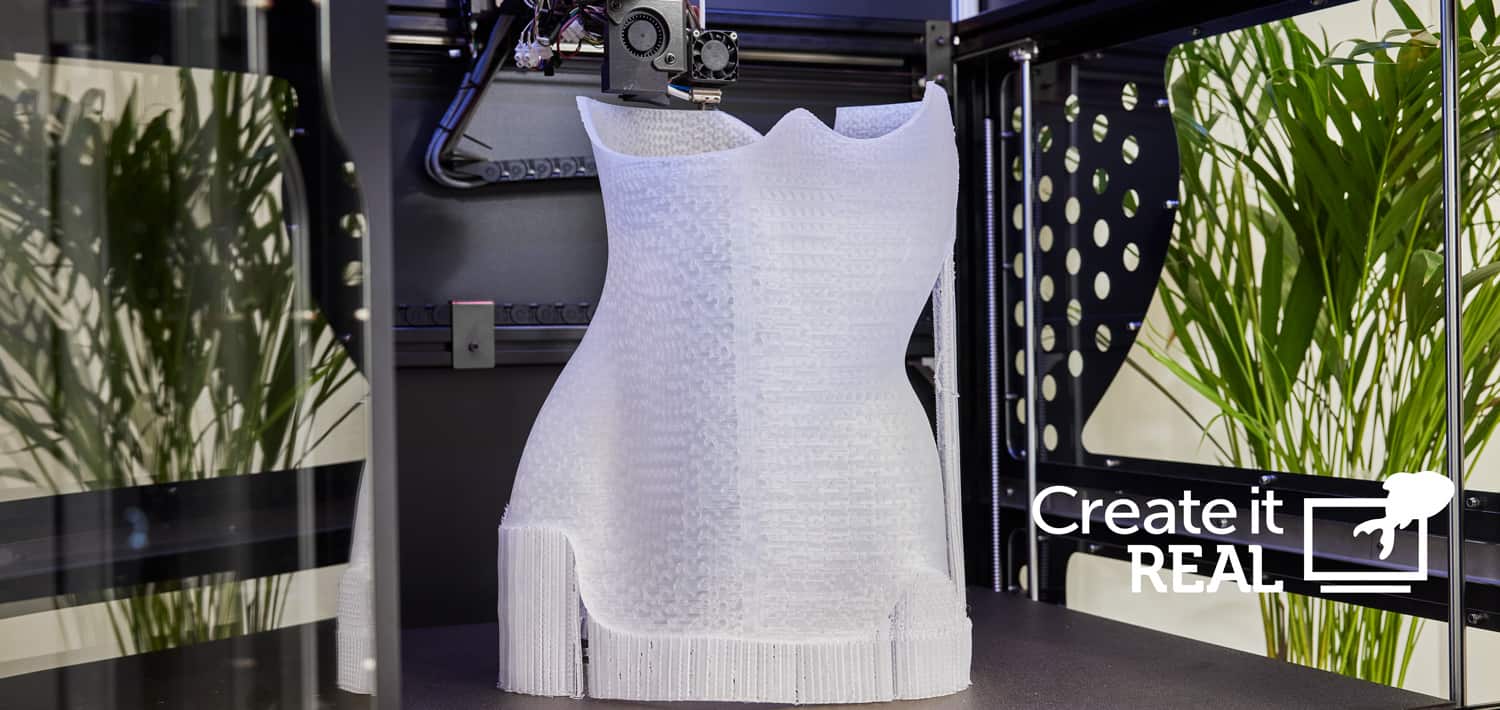Continuous recycling of 3D-printed orthopedic corsets
With the introduction of 3D printing technology, orthopedic corsets have become a popular production method due to their numerous patient benefits. Create it REAL is among the technology leaders in this field, having developed a corset solution that allows for printing rigid and flexible zones in the same corset. However, as the lifespan of these custom-fitted corsets is limited to just a few years or even months, Create it REAL is now taking the next natural step by exploring the sustainability of these devices.
The orthopedic corsets are produced from polypropylene, which may be suitable for recycling, but we must learn about continuous material recycling. It is the objective behind the TRACKY project founded by the DREAM program, part of the European Union Eurocluster initiative. Learn more about the Euroclusters https://clustercollaboration.eu/euroclusters.
Digital Resilient Europe for Advanced Manufacturing
Before we dive into the actual project, let’s briefly examine the background. TRACKY is part of DREAM, which stands for Digital Resilient Europe for Advanced Manufacturing, whose objective is to reinforce the European digital ecosystem applied to manufacturing. In other words, the projects have to support the transition to a green and digital economy and, at the same time, establish and maintain partnerships between companies at the EU level.
Production of orthopedic corset based on marked recycled material
TRACKY, an initiative in sustainable manufacturing, has unveiled its project to transform the orthopedic corset industry. The primary goal of TRACKY is to demonstrate the viability of a circular economy business model centered around orthopedic corsets, contributing to the management of resources more sustainably.
We aim to transform the orthopedic corset industry, promoting sustainability and innovation to benefit patients, healthcare, and the environment. In this ambition, we have outlined specific project objectives:
- Recycling 3D printing filament: The project seeks to produce high-quality 3D printing filament from old orthopedic corset parts, ensuring the material’s integrity even through multiple recycling cycles.
- Developing a tracking system: TRACKY is developing a tracking system that collects essential information about the material, including its stage of recycling and material type. This data will be seamlessly integrated into the 3D file.
- Quality production monitoring: The project involves monitoring production quality across multiple sites, ensuring the recycled materials meet the necessary standards.
- Demonstrating printability: TRACKY aims to showcase the feasibility of using recycled materials in 3D printing, particularly with Fuse Deposition Modelling (FDM), and validate their mechanical properties.
- End-user benefits: The project intends to demonstrate to end-users the advantages of using recycled materials from both cost and resource perspectives. This involves starting from an old corset part, recycling it into a new filament, and automatically modifying the 3D file for seamless incorporation into the final product.
The founder and CTO of Create it REAL, Jeremie Gay, explains: “This is entirely new ground. Until now, we have only been recycling polypropylene one time. We are particularly interested in how it behaves after the fourth, fifth, or many more times reuses. Do we need to auto-adjust how we print to maintain the material quality and maximize the times it can be reused? Can we reuse it forever under the right conditions? Can we track those conditions? This is what we want to answer with the TRACKY project”
The expected outcome
TRACKY project’s success depends on effectively tracking materials and integrating vital data into 3D files. This streamlines production while maintaining top-quality standards, benefiting orthopedic patients and the medical sector. Additionally, the project aligns with digital technologies like IoT and System Integration, primarily targeting the medical and potentially other sectors, depending on material recovery practices.
TRACKY expects key outcomes:
- Demonstrating cost-effective corset recycling
- Optimizing material supply chains and reducing waste
- Environmental impact assessment with Life Cycle Assessment
We have established Key Performance Indicators (KPIs) to ensure material tracking and reduced reliance on entirely new materials in production.
Arrange an interview
The project is started and runs until the end of May 2024 and is led by founder and CTO Jeremie Gay, Create it REAL. For further information or to arrange an interview, please get in touch with marketing manager Mette Kristensen at [email protected].
Company website: www.createitreal.com – https://www.createitreal.com/3d-printed-corset/
Boilerplate:
“At Create it REAL, we are passionate about empowering creativity through 3D printing. That’s why we’ve developed REALvision Core slicer technology as a cornerstone of our offerings.
Our highly skilled 3D printing team is based in Aalborg, Denmark, and we’ve been at the forefront of the industry for over a decade. Throughout our mission to make 3D printing accessible and enjoyable for everyone, we strive to impact the industry positively. Our Embrace suite for orthopedic applications includes CAM solutions for insoles, corsets, and seats. Providing a range of opportunities for businesses within the healthcare sector seeking to mass-customize high-quality products for individuals.
In addition to offering top-notch software solutions, we also provide expert consultancy services to help you maximize your 3D printing potential. With REALvision Pro and our professional consultancy services, we give you all the tools to turn your 3D printing aspirations into reality. We invite you to experience the power of Create it REAL and unlock the full potential of your creativity.”



